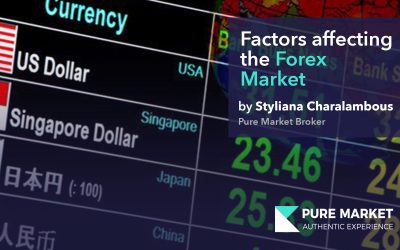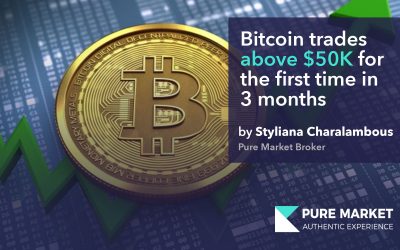Are you interested in trading foreign currency exchange markets but do not have the knowledge or the time to trade forex? Forex PAMM accounts may be the ideal choice for you.
What exactly is a PAMM Account?
Percentage Allocation Management Module, also known as Percentage Allocation Money Management or PAMM, is a form of pooled money forex trading. An investor allocates his funds to a qualified trader/strategy manager of his choice. These traders/strategy managers usually manage multiple forex trading accounts using their own capital and such pooled funds, aiming to generate a profit.
In order to demonstrate PAMM accounts further, let’s look at an example:
A PAMM structure may involve the following participants.
The investors (say Jack, John and Jane) want to profit from forex trading, but they either don’t have sufficient knowledge and they don’t have the required time to devote to any trading activities in order to trade forex. Enter the professional money managers (Scott and Simon), who have expertise in trading and managing other people’s money (like a mutual fund manager), along with their individual trading capital. The forex trading firm signs up Scott and Simon as strategy managers for managing other investors’ money. There is an agreement in place that investors agree to take the risk for the forex trades, by giving their capital to their chosen strategy manager who will use the pooled money to trade forex per his trading style and strategy. It also states how much the money (or percentage) the manager will charge as his take for offering this service.
For simplicity of example, let’s assume that all three investors chose Scott to manage their share of money for forex trading and Scott charges 10% of the profit.
In terms of percentage contribution to the total pooled PAMM fund of $ 15,000, each investor has the following share:
Jack = $4,000 / $15,000 = 26.67% and similarly,
John = 23.33%
Jane = 16.67%
Scott = 33.33%
(The sum total of all shares in the pool always remains 1 or 100%.)
Suppose one trading term passes (e.g., a month) and Scott manages to make a cool 30% profit on his pool, which now stands at $19,500 ($15,000 + 30% profit or $4,500).
He takes away his 10% charge on profit or $450. The remaining profit of $4,050 is distributed to all investors based on what percent they each have in the total pool:
Jack = $4,050 * 26.67% = $1,080
John = $4,050 * 23.33% = $945
Jane = $4,050 * 16.67% = $675
Scott = $4,050 * 33.33% = $1,350
Total = $19,050
Assume that because of the first term stellar performance of 30% returns, all three investors decide to continue with Scott for another term. Jack and John stay invested with their (original + returns) amount, while Jane cashes out the profit, leaving only his original investment of $2,500. Jack also refers a friend, Gino, to join the pool, and Gino brings $2,625. Another new investor, Matt, signs up and selects Scott to manage his $1,000. The total trading pool for Scott is now = $22,000.
Percentage share for each investor:
Jack = $5,080/22,000 = 23.09%
John = 20.20%
Jane = 11.36%
Scott = 28.86%
Gino = 11.93%
Matt = 4.55%
Scott manages a 15% return during this term (15% * $22,000 = $3,300) and takes his 10% ($330). The remaining profit of $2,970 will be available to individual investors per their respective share:
Jack = 23.09% * $2,970 = $685.80
John = $600.08
Jane = $337.50
Scott = $857.25
Gino = $354.38
Matt = $135.00
Total pooled money in the fund = $24,970.
Next, let’s assume all the investors continue with the above investments for another month with Scott, who unfortunately loses 20%. This means no 10% profit share for Scott and each investor will see their share of the pooled investment drop by 20%, bringing the pooled money down $4994 to $19,976.
Jack = $5,765.8 – 20% = $4,612.64
John = $4,036.06
Jane = $2,270.00
Scott = $5,765.80
Gino = $2,383.50
Matt = $908.00
Total pooled PAMM fund for Scott = $19,976
At the end of each term, investor has the choice to continue with the money manager, switch to another money manager partially or fully, or cash out the capital.
The role of forex broker is to:
Provide a secure, fast and reliable platform that allows strategy managers and investors to interact.
Facilitate the trading activities of money managers within the realms of allowed regulations.
Facilitate the account keeping, deposits, withdrawal, and related activities.
Apart from a usual trading business platform, allow transparent review, feedback, rating, and related mechanisms for investors and money managers to select and interact with each other.
How do investors’ select money managers?
Brokerage firms offer numerous way for investors to make an informed choice, including verified track record and profitable trading history. Pure Market Broker assesses investor’s risk profile, time horizon and target performance to be able to diversify his investment.
Investors
Usually, the investors have no choice of forex trading assets, except for those offered by the money manager.
They carry the risk of losing their capital due to trading activities of money managers, but also enjoy the potential of returns if the manager performs well.
Money Managers
Have access to the money only in their pool. They cannot pull money from investor’s trading accounts. For example, Paul may have a total of $9,000 in his forex trading account, but since he has allocated only $4,000 to Marcus, Marcus cannot trade beyond that $4,000.
Can set a minimum and a maximum amount criteria for investors.
Can accept or deny new investors as they wish.
The Bottom Line
PAMM accounts are a simple hassle-free method for individuals to pick and choose their money managers for forex trading. With these accounts, investors benefit from profits with minimal involvement. However, PAMM accounts also carry the risks of capital loss, based on a money manager’s performance. After understanding their desired profit potential and risk aversion, individuals should perform due diligence in selecting a PAMM account broker and money manager.
How to be a value investor
How to be a value investor
Factors affecting the Forex Market
Factors affecting the Forex Market
Bitcoin trades above $50K for the first time in 3 months
Bitcoin trades above $50K for the first time in 3 months




